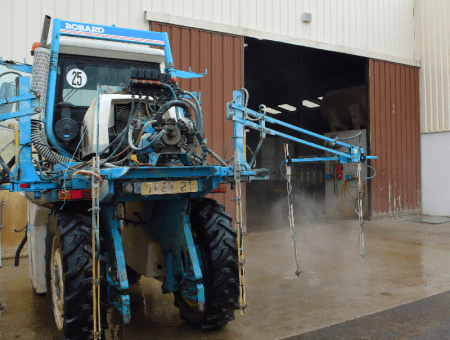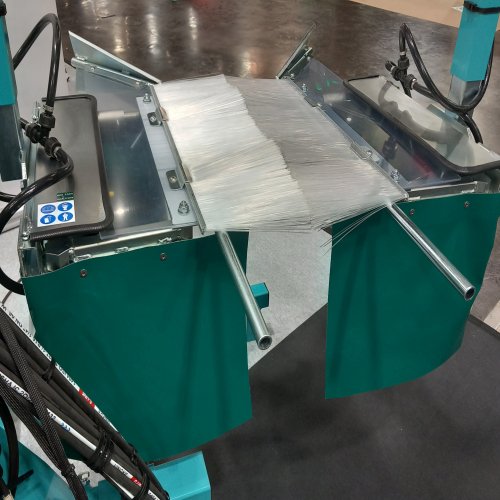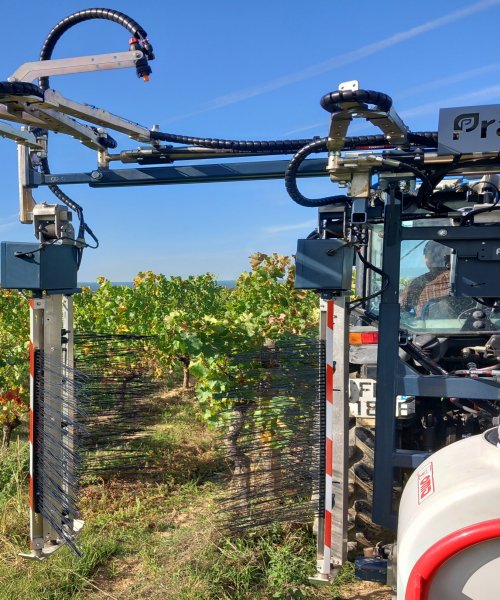Projected jet sprayer
The jet sprayer is an old spraying technology, mainly used for weed control under the row because it does not have a blower. It works by sucking up the spray liquid via a pump, then delivering it through an orifice where the liquid stream is divided into fine droplets by a sudden acceleration. The liquid is broken up by nozzles, without air assistance, and the droplets are projected into the air using their kinetic energy to reach their target.

Technical presentation
Use
The "projected jet" is the oldest spraying technology. It was regularly used for the first vine treatments, as the vegetation was not very thick and did not require ventilation.It can be found in 2 configurations:
- Chemical weed control
- Spraying foliage

DHUGUES weed control tunnel
- Shown here is a weeding jib, with a spray pattern, 1 complete row with a protective cover to limit the drift of phytosanitary products. Also known as a "weeding tunnel".
- Shown here is an oscillating sprayer. This spraying technology is unique thanks to the oscillation of the booms and a reduction in the drift of phytosanitary products of at least 90%.

PRAYSBEE oscillating sprayer
This technology is most commonly used for under-row weed control. However, we are starting to see the use of sprayers for foliage spraying, thanks in particular to a recent manufacturer that combines sprayers with oscillating booms.
The jet sprayer works by sucking up the liquid via a pump and then delivering it to an orifice. The liquid stream, subjected to sudden acceleration, breaks up into droplets that are finer the smaller the orifice and the higher the pressure. It is the nozzle that produces the droplet and the shape of the jet.
The main difference with a carrier spray is that the projected spray does not use a blower to carry the spray liquid to its target.
As a result, the projected spray limits the aerial drift of phytosanitary products from the vine.
Why "projected jet"?
This is because the drops produced by pressurising the liquid are projected into the air and it is the kinetic energy they have stored up that enables them to reach their target, having overcome the resistance of the air.
Experiment
See the list of experimentsSee more 











